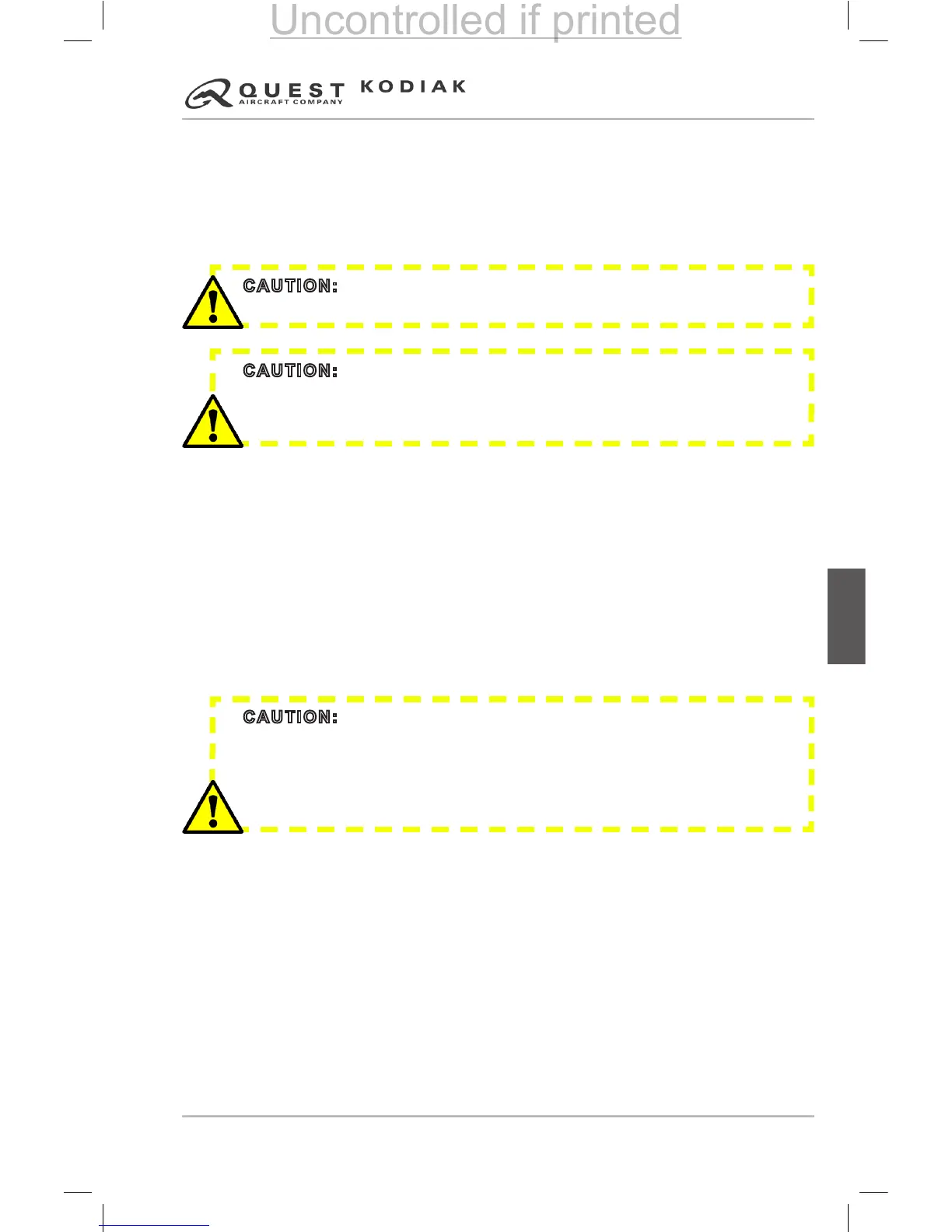Starting with Alternate Power
The engine may be started with airplane battery power or with a ground power
unit (GPU). However, it is recommended that a GPU be used to start the
engine when outside air temperatures are less than 0°F (-18°C). Refer to the
Cold Weather Operations description in this section when ambient temperatures
are lower than 0°F (-18°C).
Hot Starts
Prior to starting the engine with battery power, check the bus voltages for a
minimum of 24 volts. As with all turbine engines, the operator must monitor
the ITT during each start to take corrective action if signs of a “hot start” are
present. The operator must be prepared to immediately terminate the start
if the ITT exceeds 1090°C or is rapidly approaching this limit. Hot starts are
not a common occurrence if the proper starting procedures are followed. A
“hot start” is an over-temperature condition caused by excessive fuel ow at
normal engine RPM or normal fuel ow with low engine RPM. The latter is
the more common situation and is usually caused by attempting an engine
start with a partially discharged or weak battery system.
Following a terminated start for any reason, it is essential to allow a 30
second draining period to drain off the residual fuel prior to attempting the
next start. Failure to drain all of the residual fuel from the engine could lead to
a hot start, a hot streak damaging the hot section, or torching of residual fuel
in the engine exhaust on the next successful ignition.
After the residual fuel has drained for 30 seconds, perform a dry motoring run
for 15 seconds - observing the starter limitations. This will ensure that no fuel
is trapped prior to accomplishing the next start. If the engine fails to start after
attempting a HI START, follow the Engine Starting Cycle Limitations provided
in “Section 2” of this manual.
CAUTION: When a Ground Power Unit is used, ensure the unit is
negatively grounded and regulated at 28 volts DC. The GPU must be able
to provide a minimum of 800 amperes during the starting cycle and must
not exceed 1700 amperes.
CAUTION: A minimum battery voltage of 24 volts is not always a
proper indication of the battery being fully charged or in good condition.
Therefore, during the early stages of performing an engine start, if the
gas generator acceleration is noticeably lower than normal, return the
fuel condition lever to the CUTOFF position and discontinue the start.
Recharge the batteries or use an auxiliary power unit to start the engine.
CAUTION: Do not plug in the Ground Power Unit (GPU) unless the
aircraft batteries are connected to the Master Control Unit (MCU).
